Motherhood has deeply shaped my artistic practice, attuning me to the intuitive, cyclical, and often unseen aspects of life. It offers a lived experience of duality—self and other, nurturing and fierce—that echoes through my work as I explore the unconscious forces beneath daily reality.
Through sculpture and layered photography, I engage with imagery such as the moon, stones, and fragments of my children’s bodies as portals into emotional and psychic terrain. The moon’s shifting phases mirror the rhythms of motherhood and the feminine body—cycles of creation, expansion, and return. These natural patterns guide my process, inviting a slowing down and a deeper listening to inner and outer tides.
My work traces processes of wounding and healing—echoes of rupture and repair that mirror the cycles of birth, loss, and renewal. I’m drawn to the tension between the celestial and the terrestrial: the body as both vessel and cosmos, rooted yet infinite. Stones, in particular, serve as anchors of healing—holding the weight of geological time while absorbing the touch of the present moment.
Between geological and human time, I find a space where the slow layering of the earth mirrors the accumulations of memory and care within the body. My practice becomes an act of attunement, revealing the quiet continuities between matter and spirit, body and landscape, the lunar and the living.
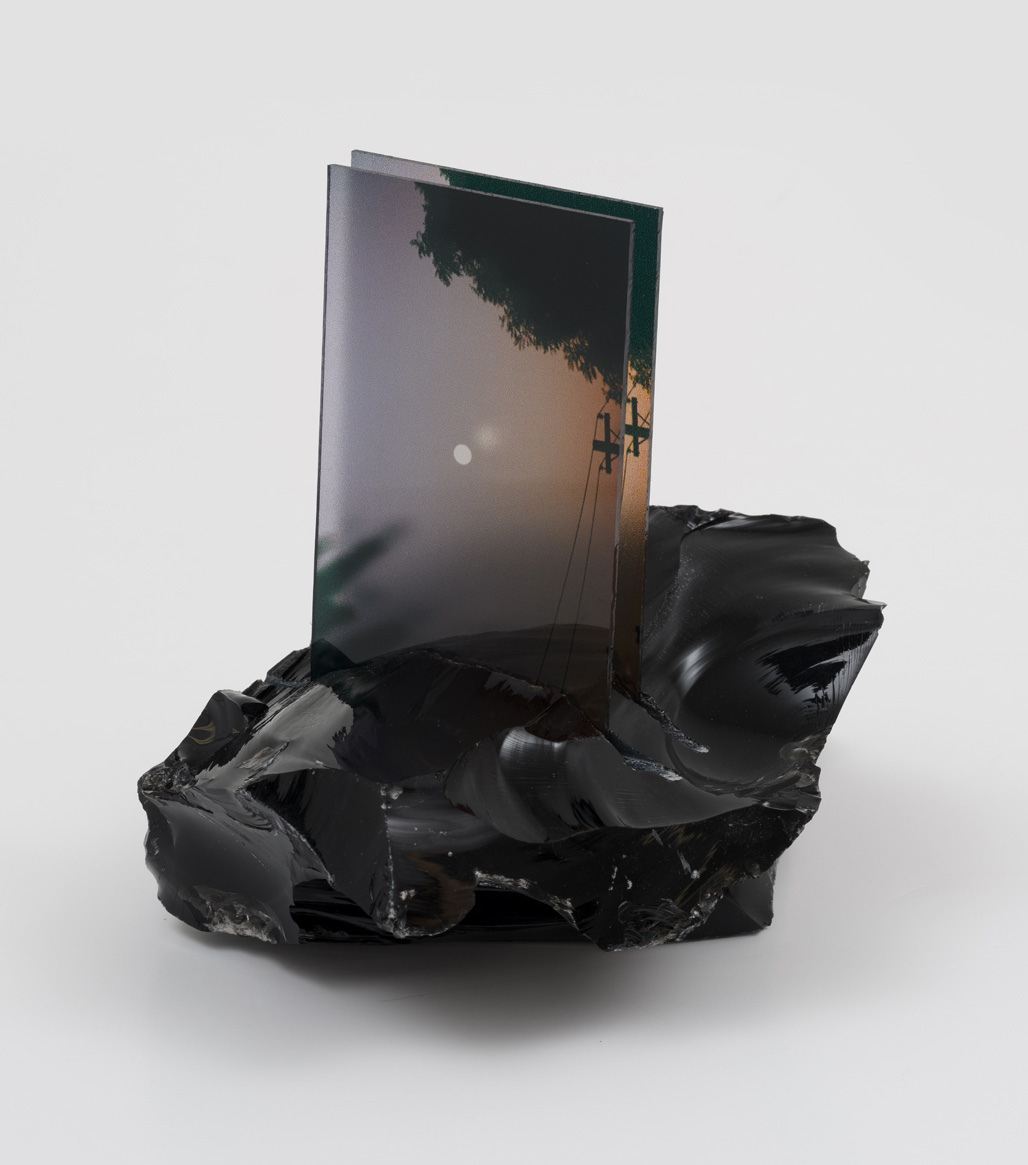
Obsidian Totem

Three Moons

Moon in Rock

Three Foggy Moons

Hands Up

Blue Moon
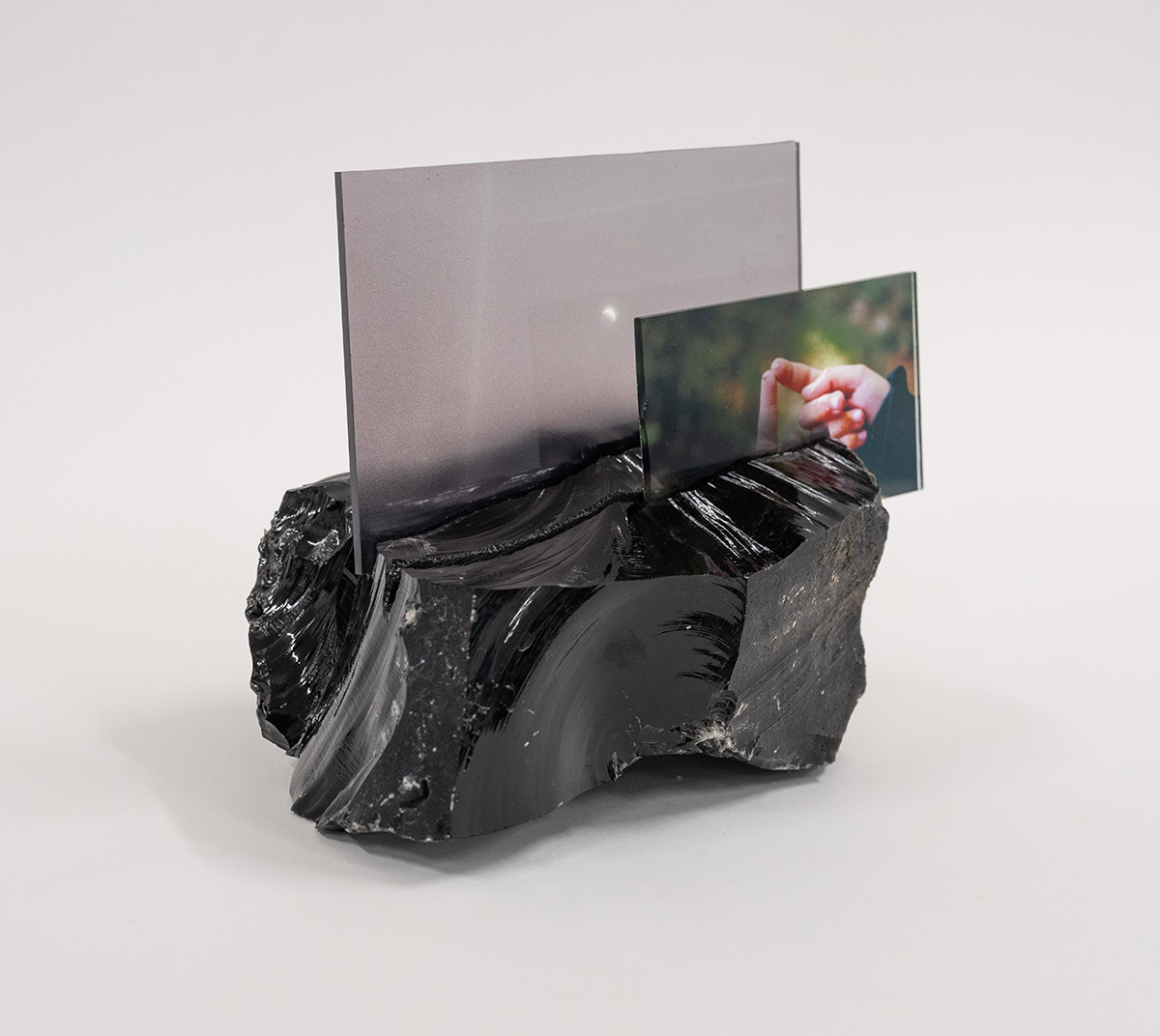
Speck of Gold
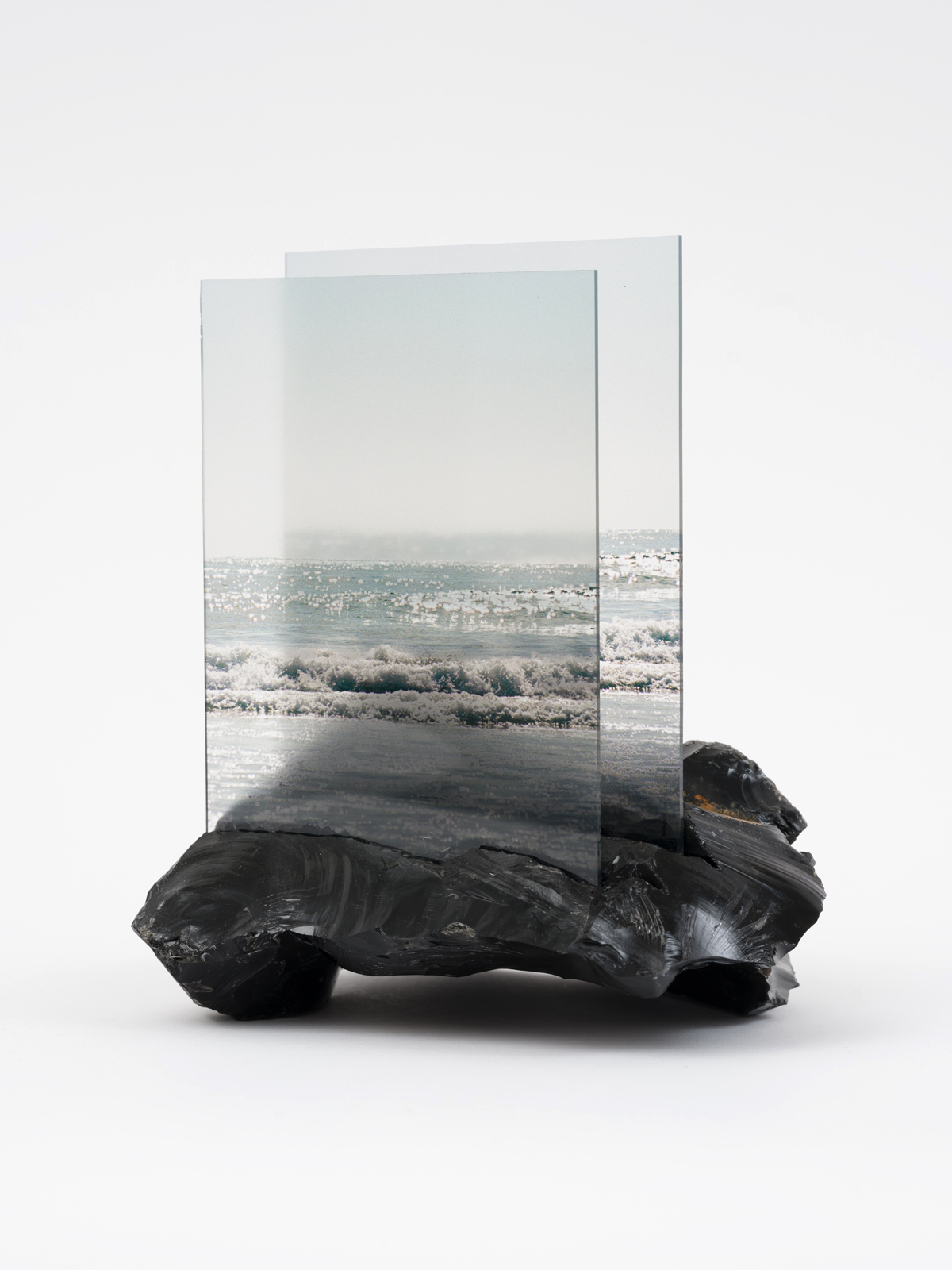
Waves into Rock

Wedged Moon
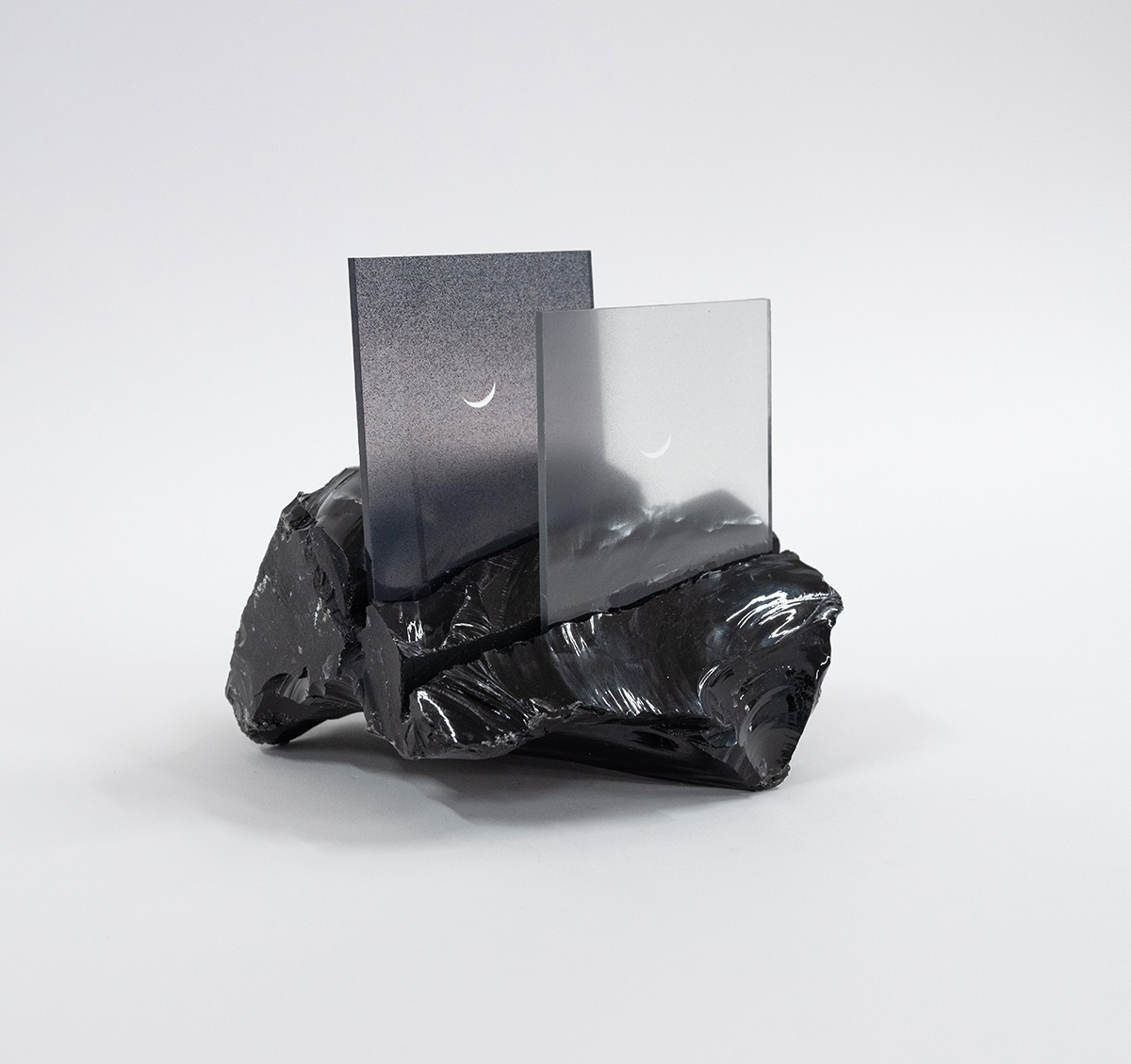
Black and White Crescents
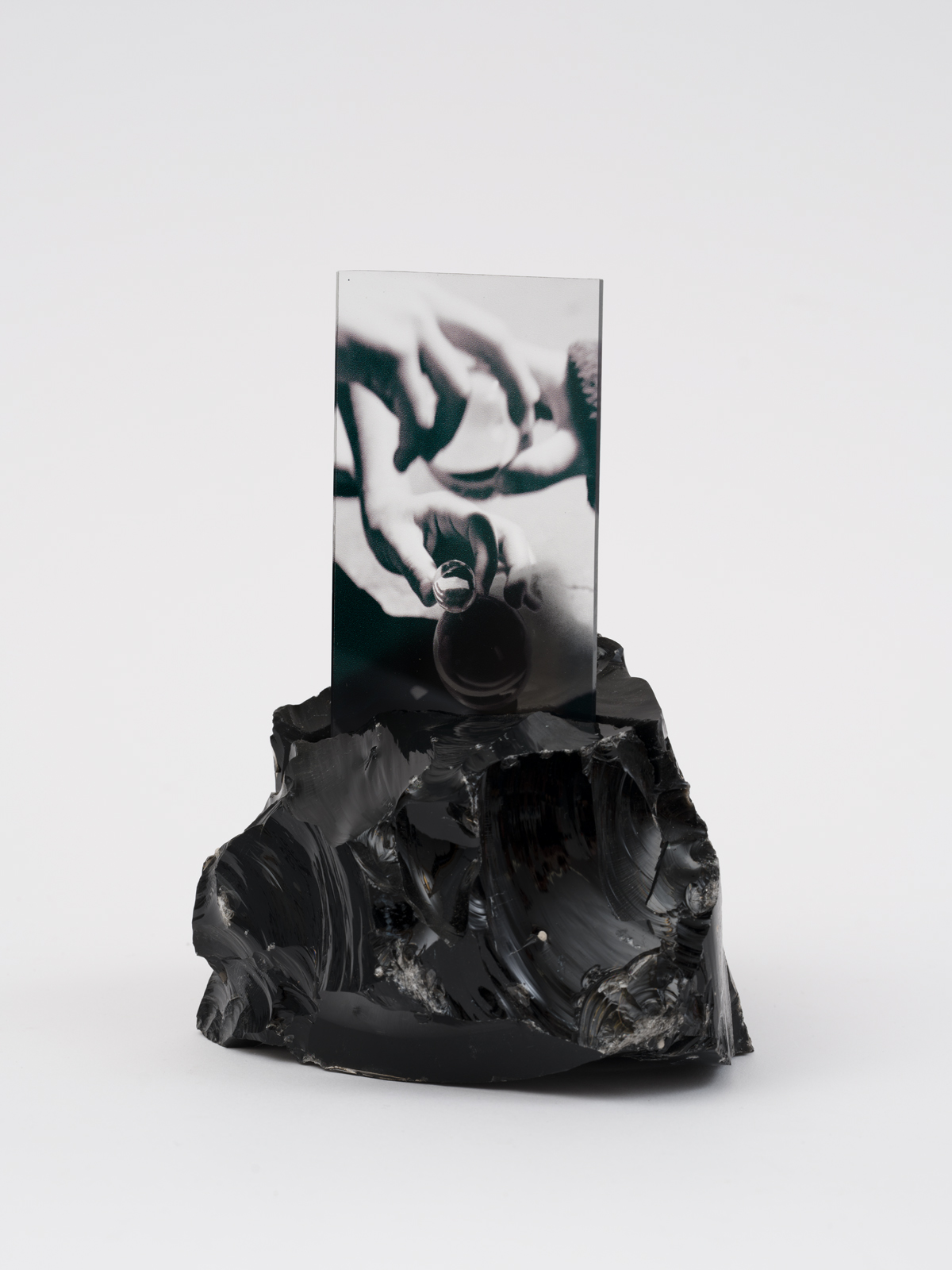
Childs Play
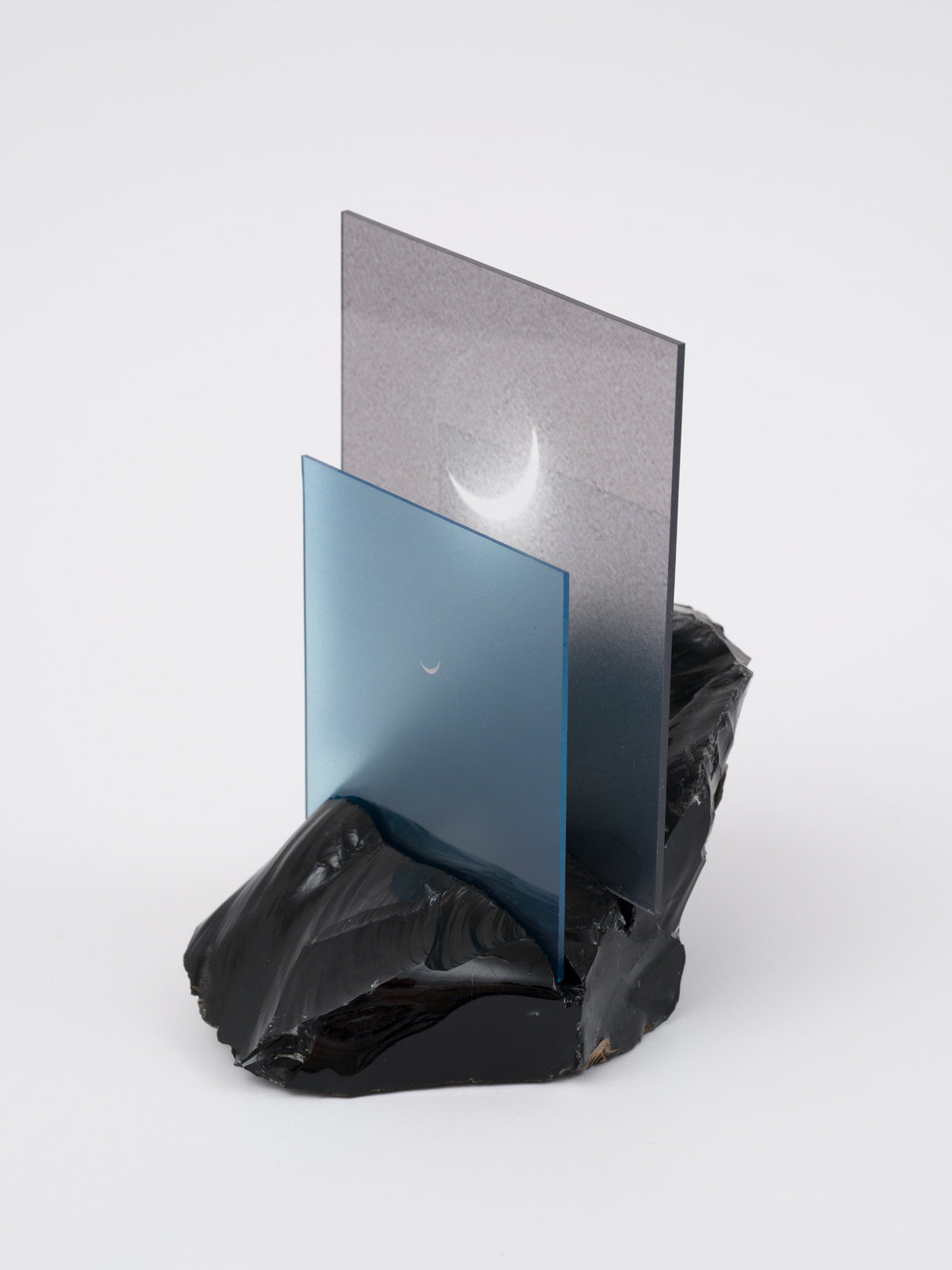
Two Crescents
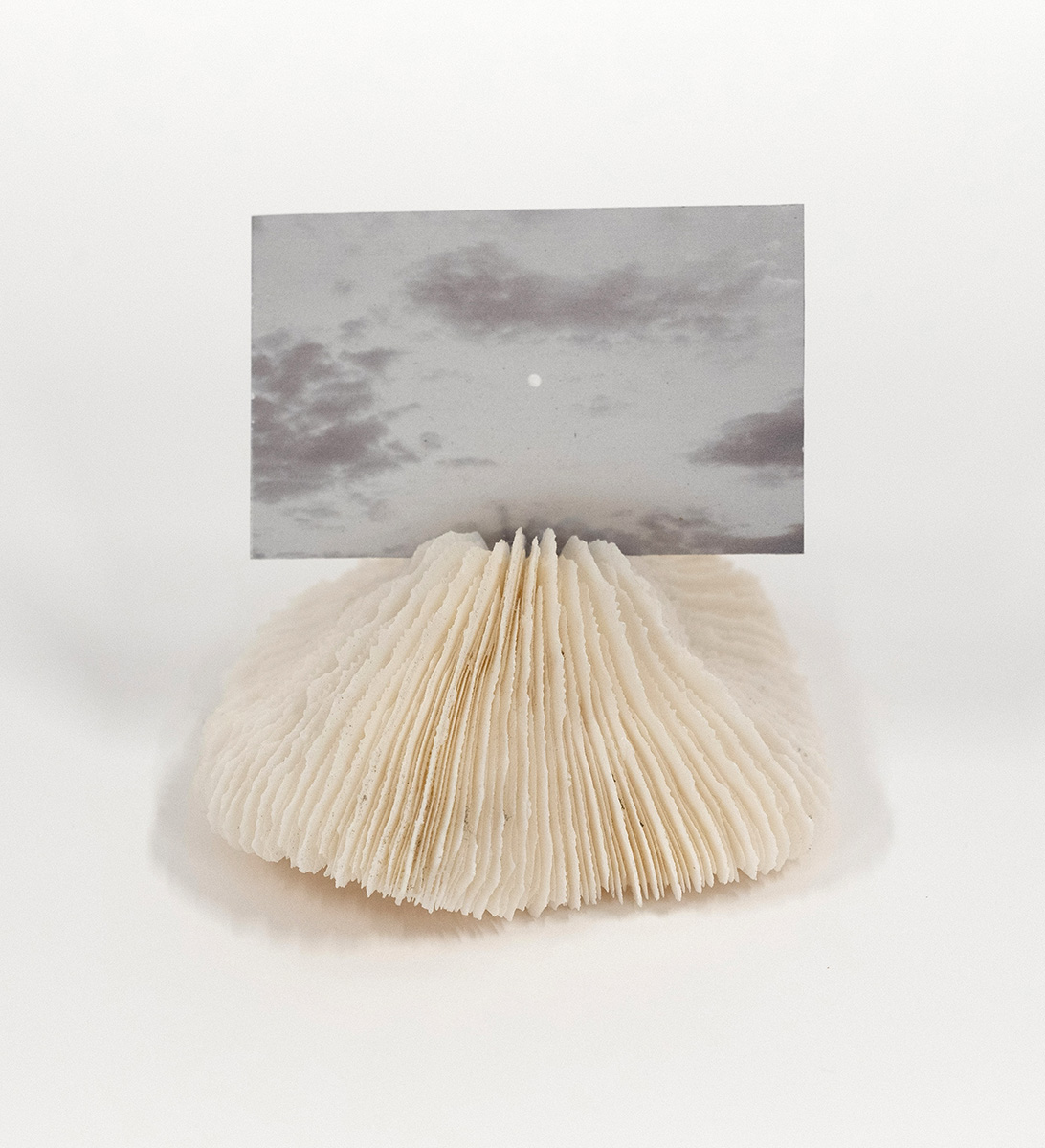
Full Moon in Coral

Black Crescent in Flourite
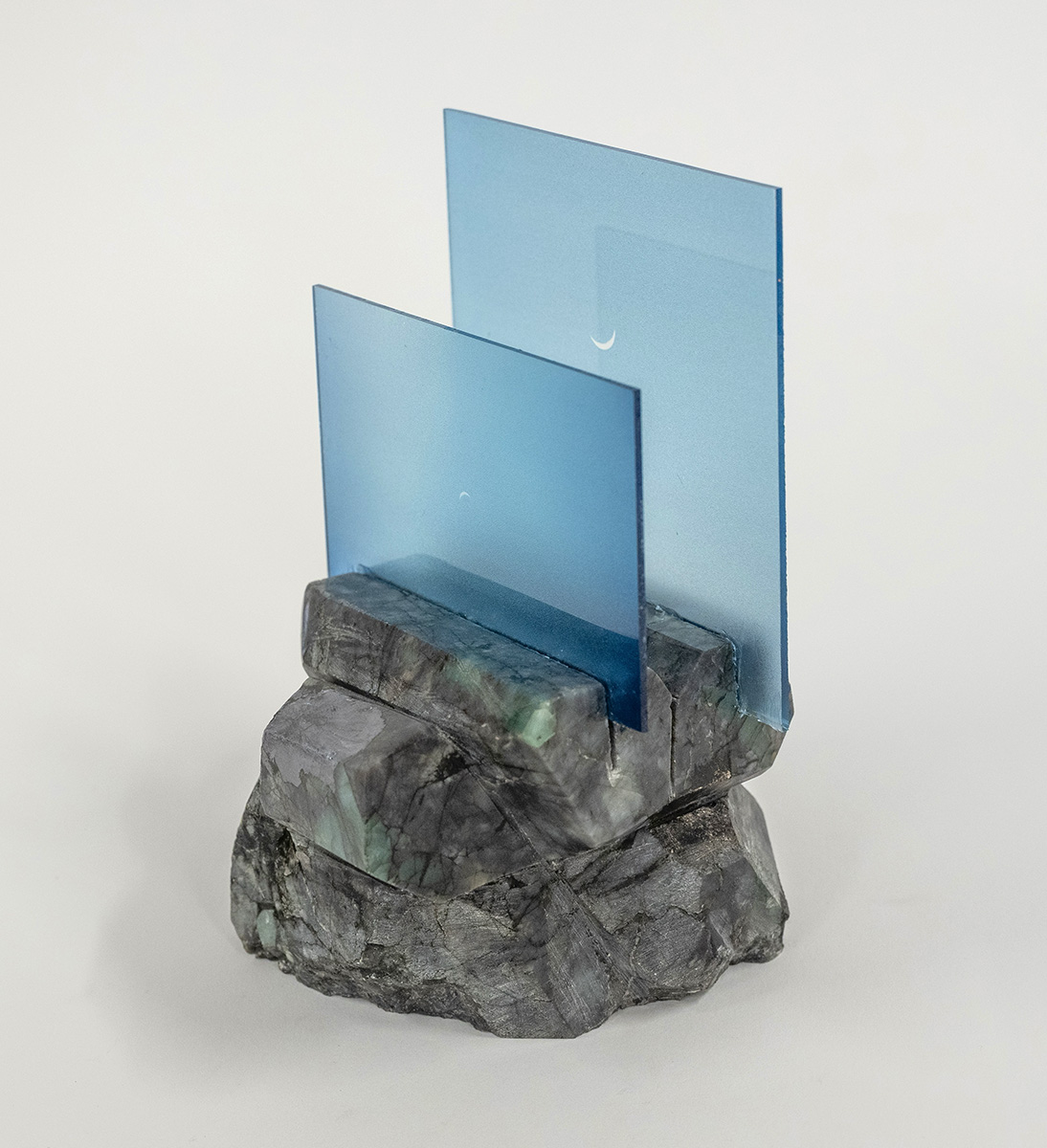
Two Crescents in Jade
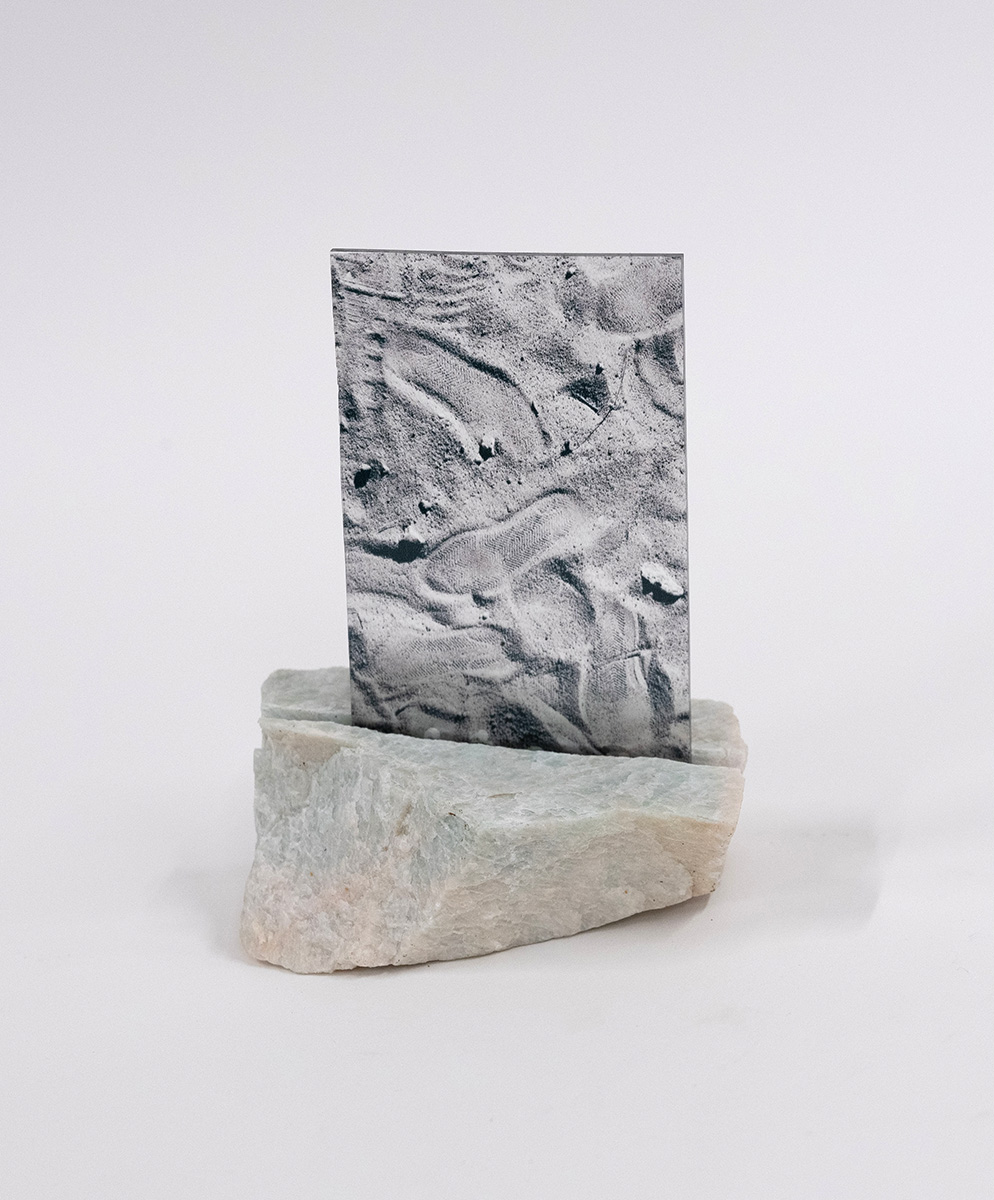
Our Footsteps in Sand
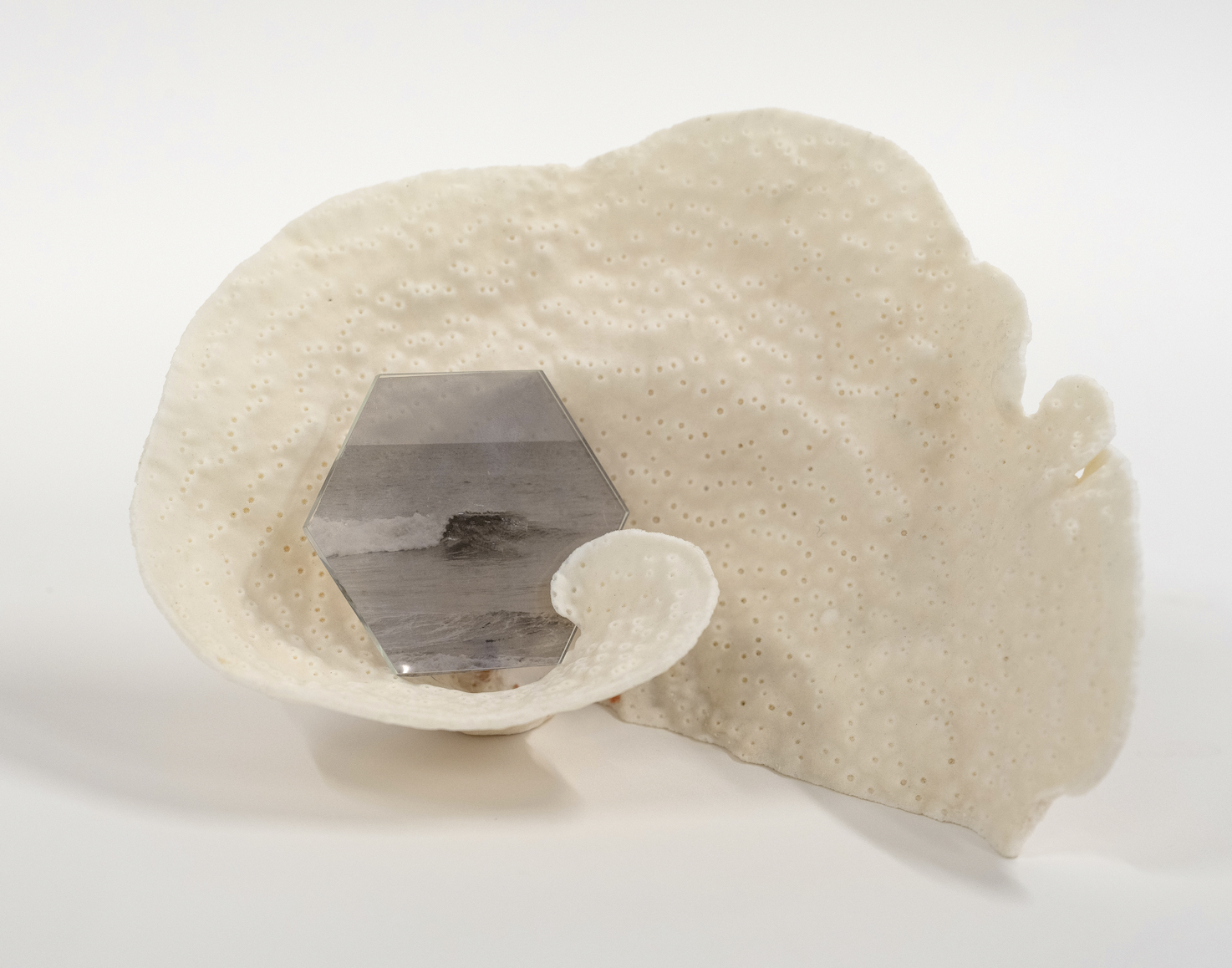
Curling Wave

Crescent in Rose Quartz

Moon over an Oak
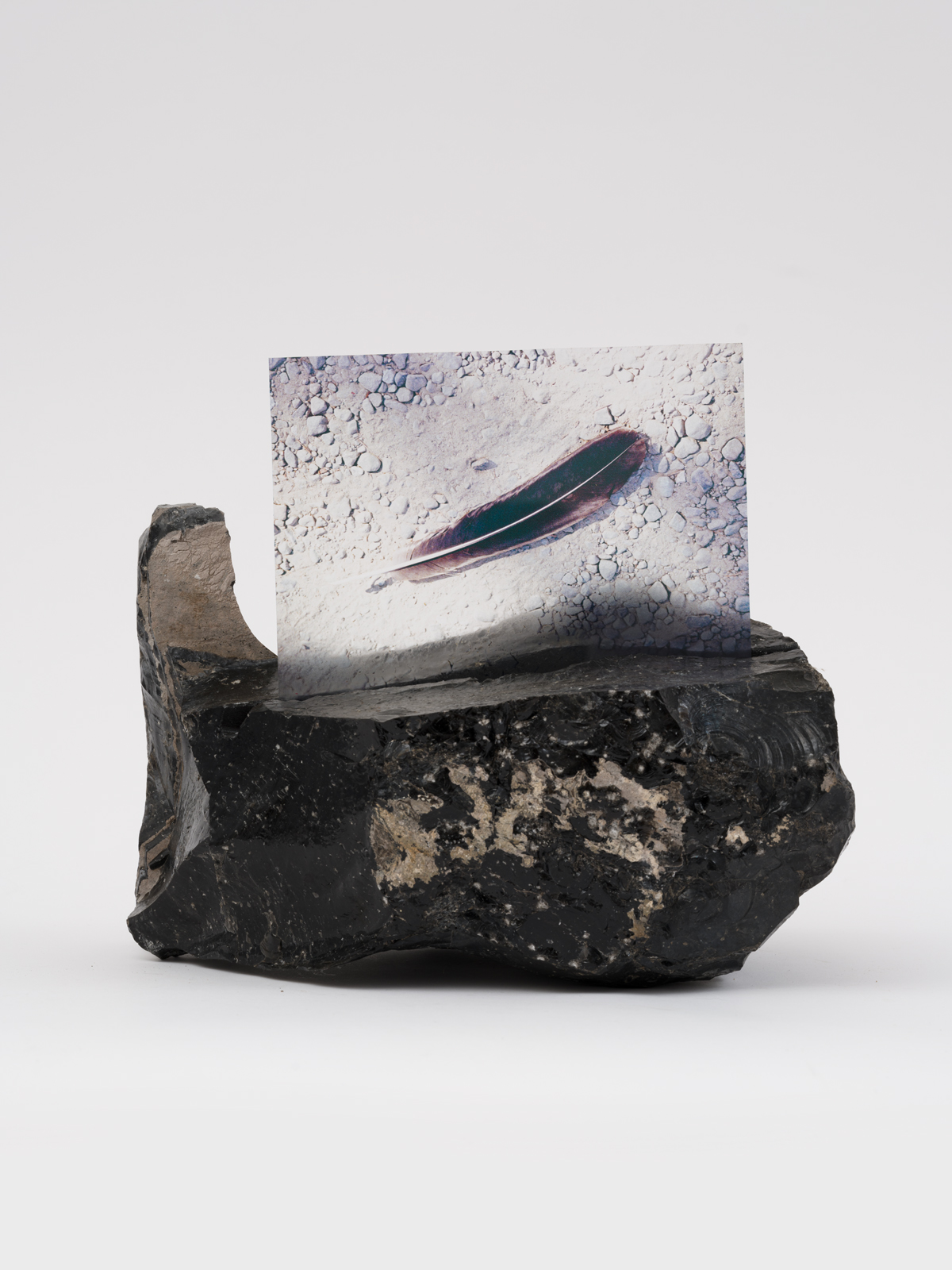
Light as a Feather, Hard as Rock
I was trained in traditional photographic practices, but as I’ve delved deeper into understanding myself as an artist, I’ve increasingly sought to incorporate sculptural elements into my work. By adding physical layers such as glass and photographic gels, I aim to transform the viewing experience, inviting the audience to engage with the emotions that resonate beneath the surface—those unconscious feelings that shape our understanding.
For years, my projects centered on landscape photography, exploring places imbued with unseen energy, like vortexes and sacred spiritual locations. However, after becoming a mother and confronting my own life’s traumas, I’ve realized that my core interest lies not just in the invisible, but in the depths of the unconscious. A pivotal moment in my artistic journey occurred in Saguaro National Park, where I grappled with my identity post-motherhood, and rediscovered my inspiration amongst the towering Saguaros and the glow of magic hour light. During this time, I was also immersing myself in the philosophies of Carl Jung. This awakening has led me to focus on the Jungian concept of “the Shadow.” The resilience of the Saguaro cacti, thriving in harsh conditions, resonates deeply with my own journey through motherhood.
In this body of work, I layer images on Plexiglass, offset from inkjet prints, to embody the notion of the shadow self. Jung theorized that our hidden aspects often remain out of reach. In my art, the layering creates both a physical and visual distance between the images, representing this shadowy facet of identity. The resulting shadows not only suggest a literal separation but also mirror the complex makeup of ourselves, echoing the intricacies of our hidden layers and the multiple roles we play.
Documentation Photography by Jeff McLane
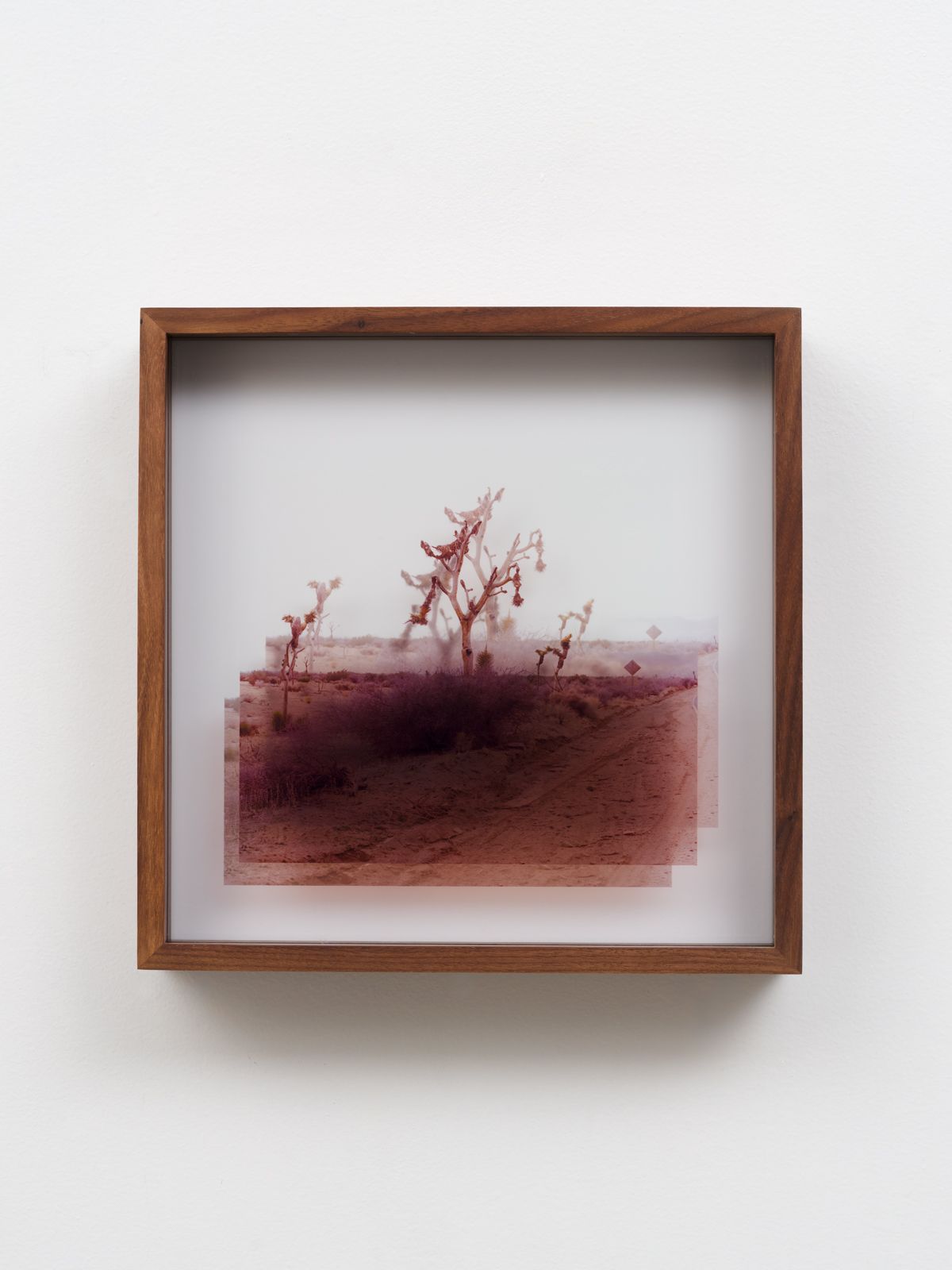




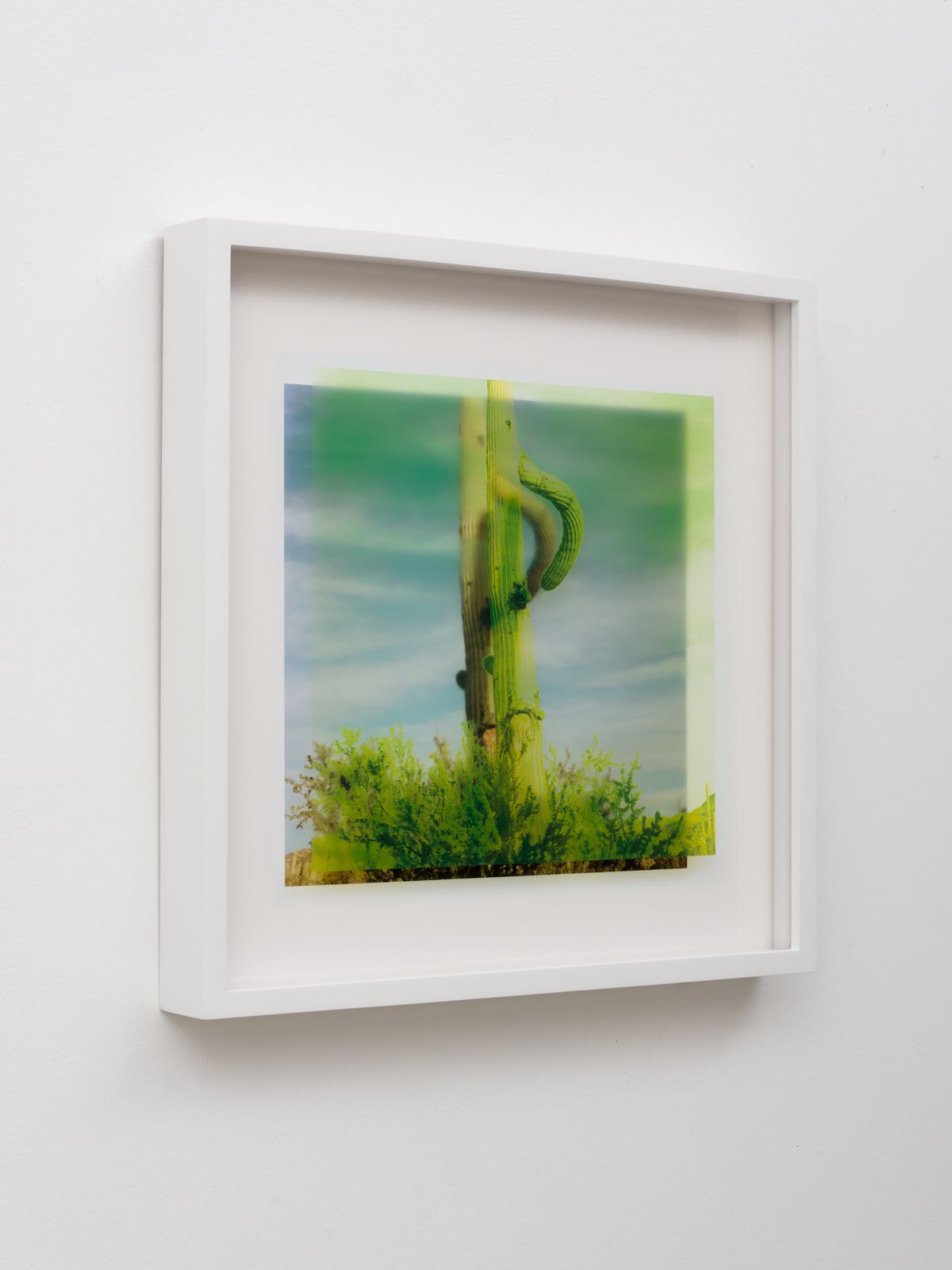


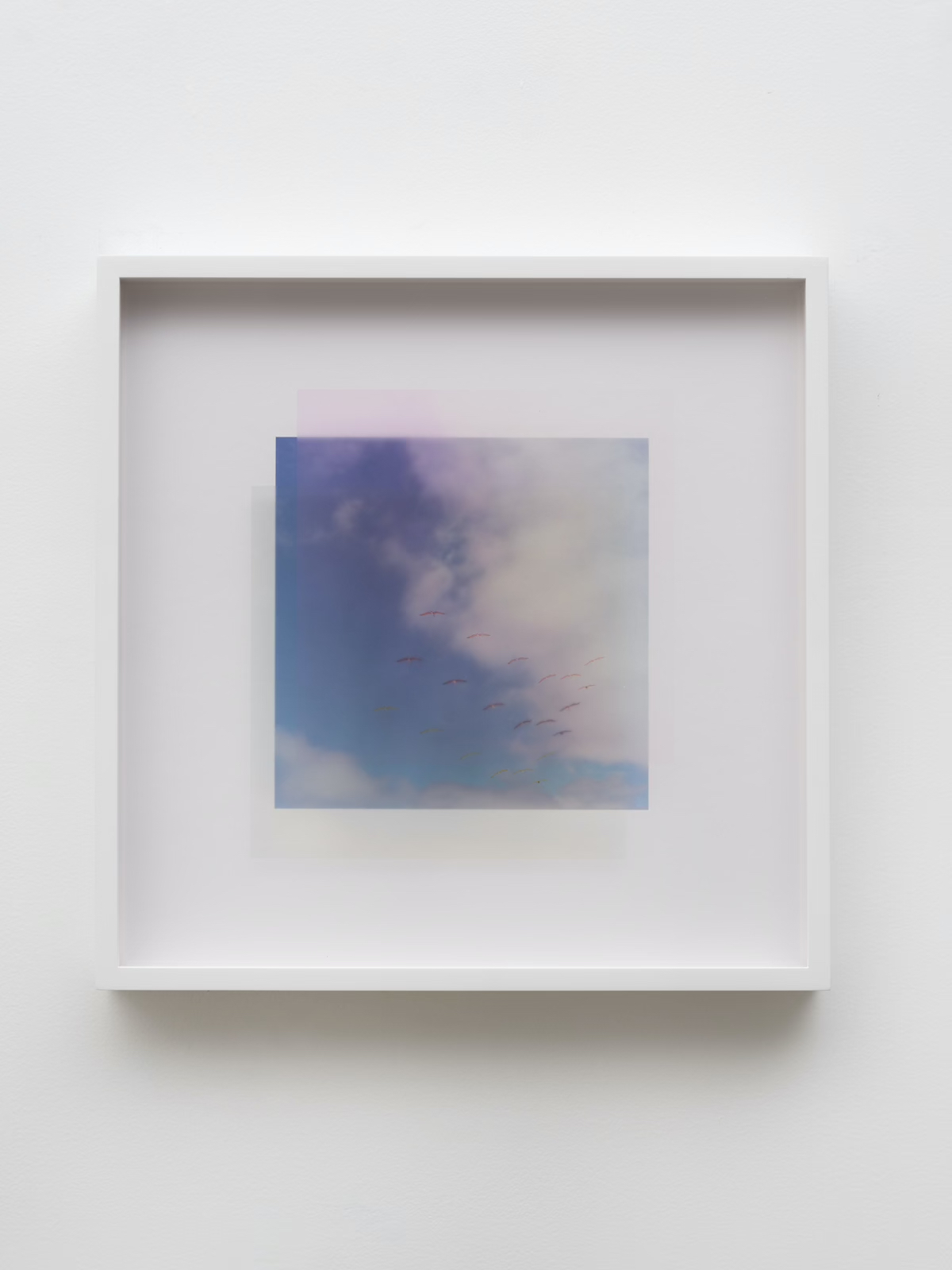
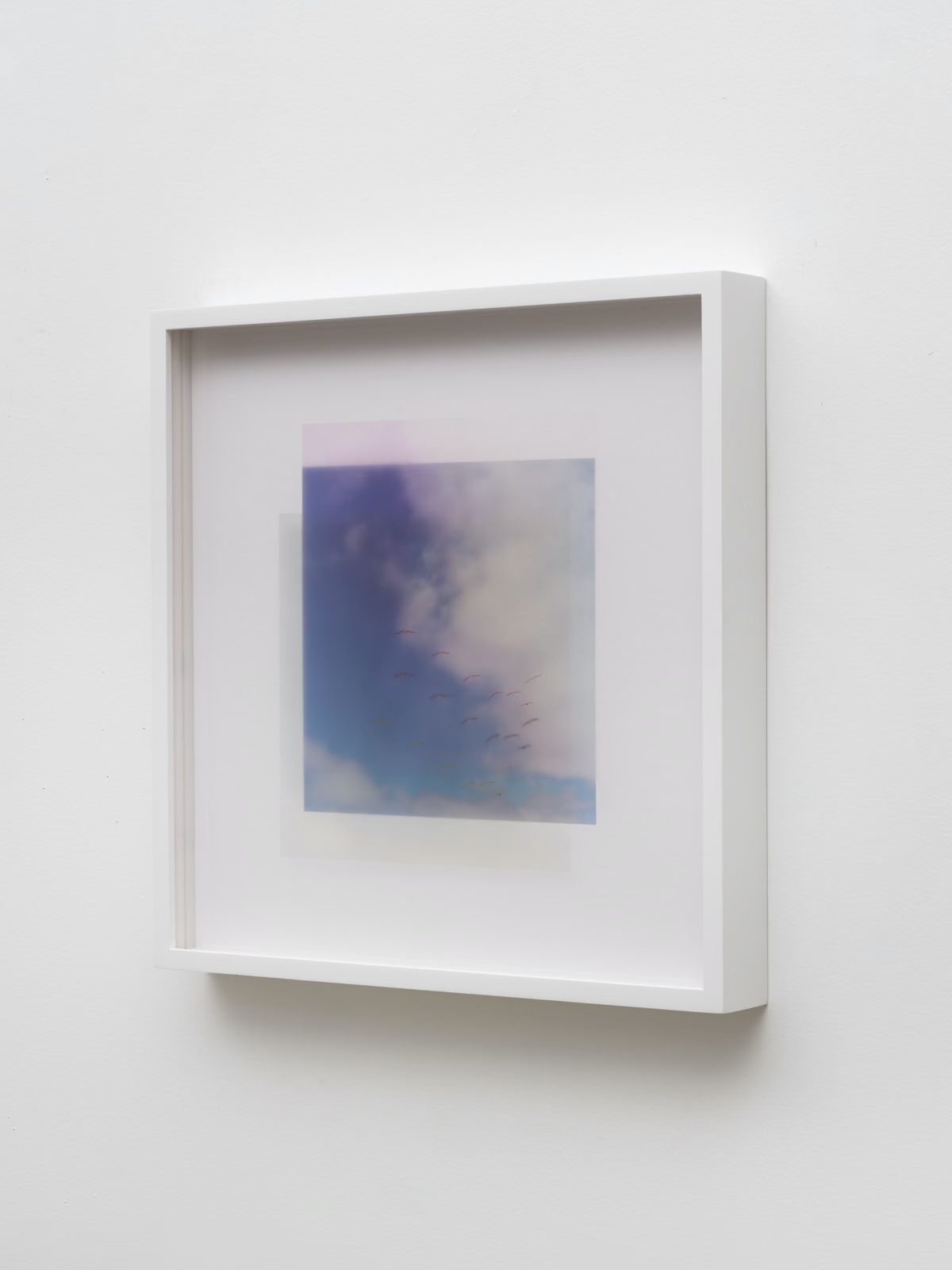








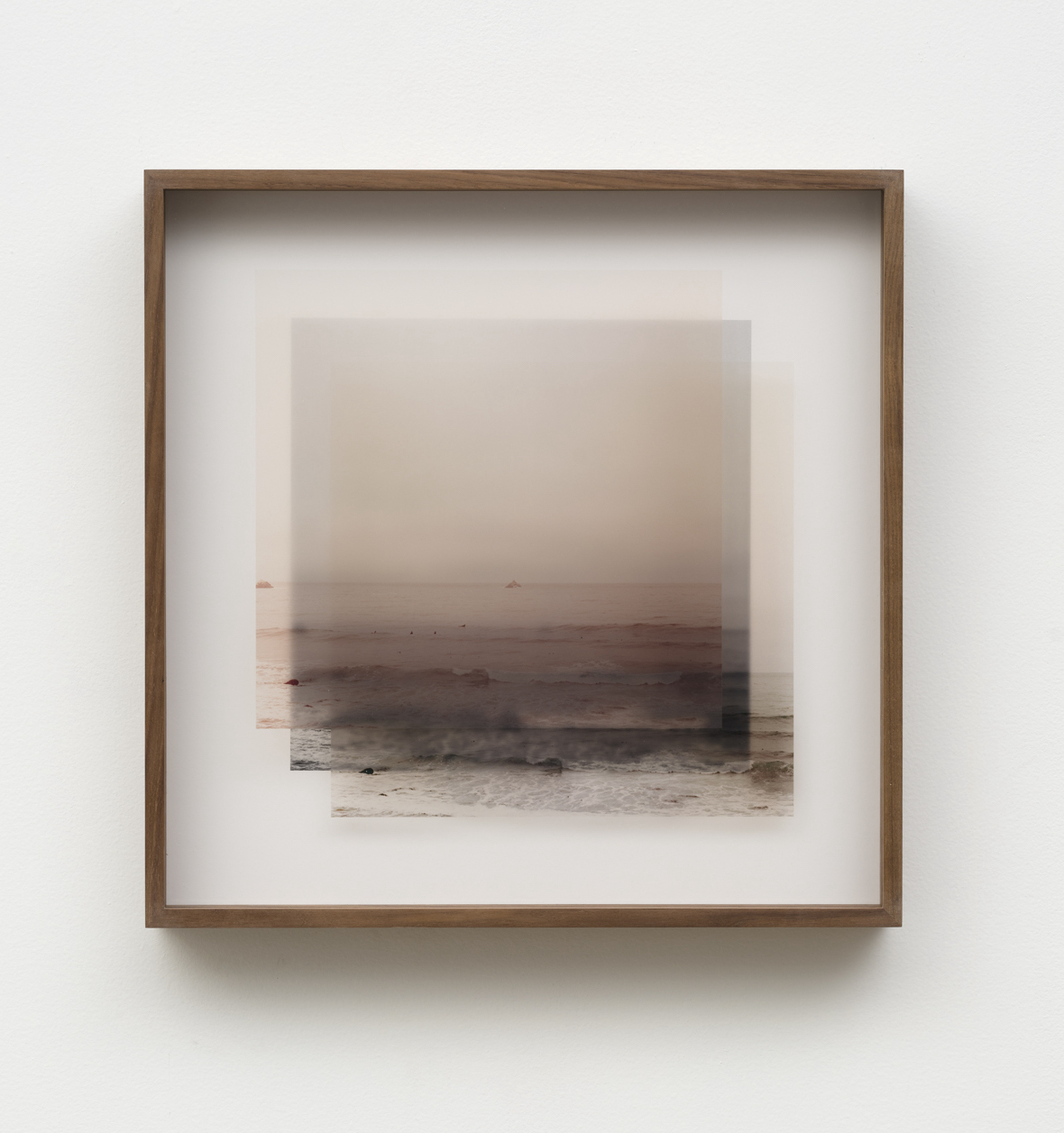


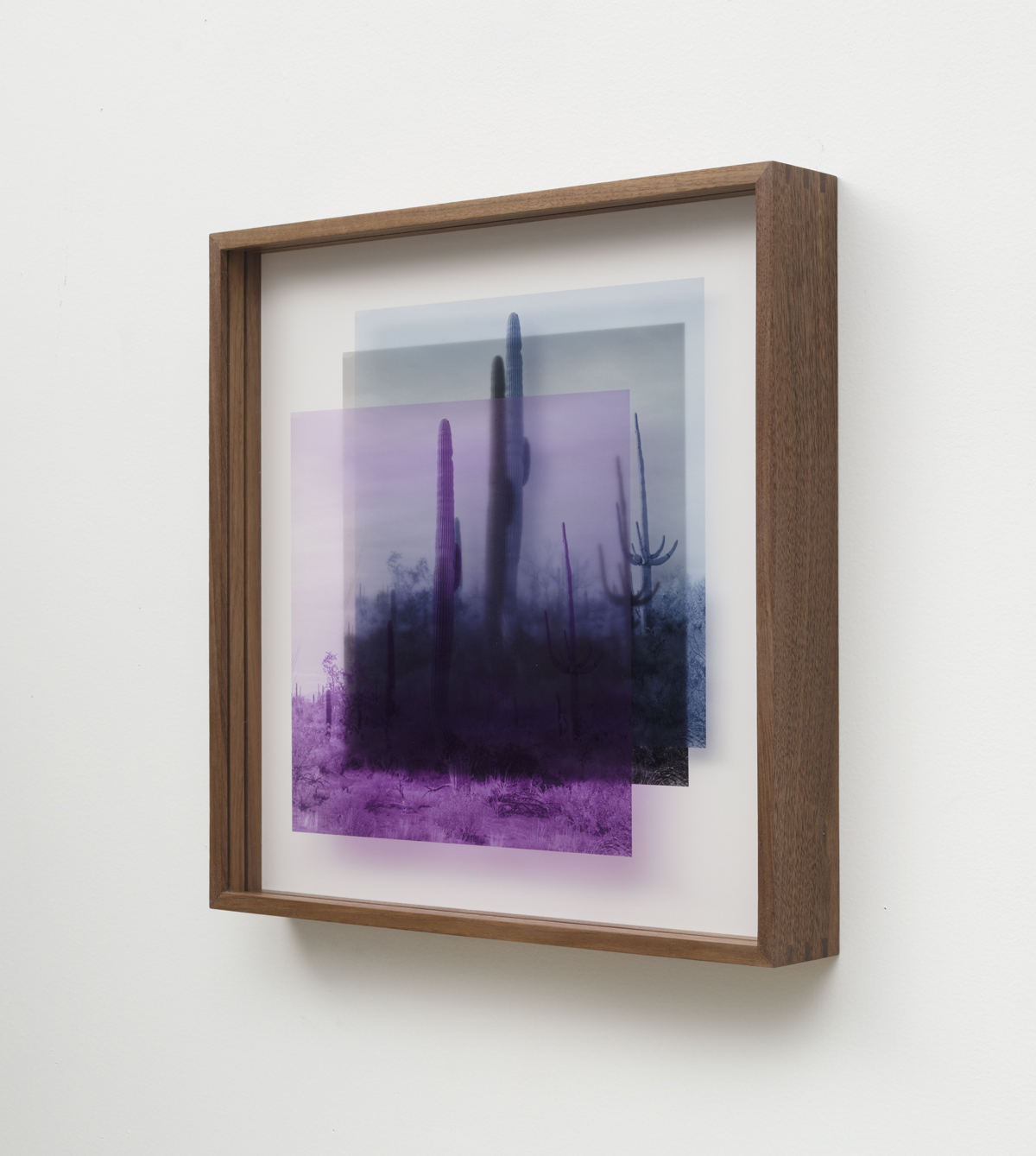




— Henry Miller
Located in California's Central Coast, Big Sur has long been a place of escape, retreat and renewal. As an artist, it has been all of those things for me. A magic hovers amongst the raised-up cliffs that make up its rugged topography. Extending for roughly 26 miles, Big Sur is a region of organic flowing coastline that no boundaries can clearly define. Perhaps this is what makes it feel so free. Big Sur has long been a magnet for artists and dreamers alike. Driving between this meeting of land and sea yields a profound quiet of the mind. These feelings are unique to this location. Simply being in this place is a meditation. Over the years I have returned to Big Sur as a place for retreat, renewal, and inspiration. This series of photographs explore different approaches to the landscape. They speak to the place as a changing topography over time, and a space that emits a palpable energy.
Installation photography by Jeff McLane
Installation at Elephant Art Space, Glassell Park, CA
















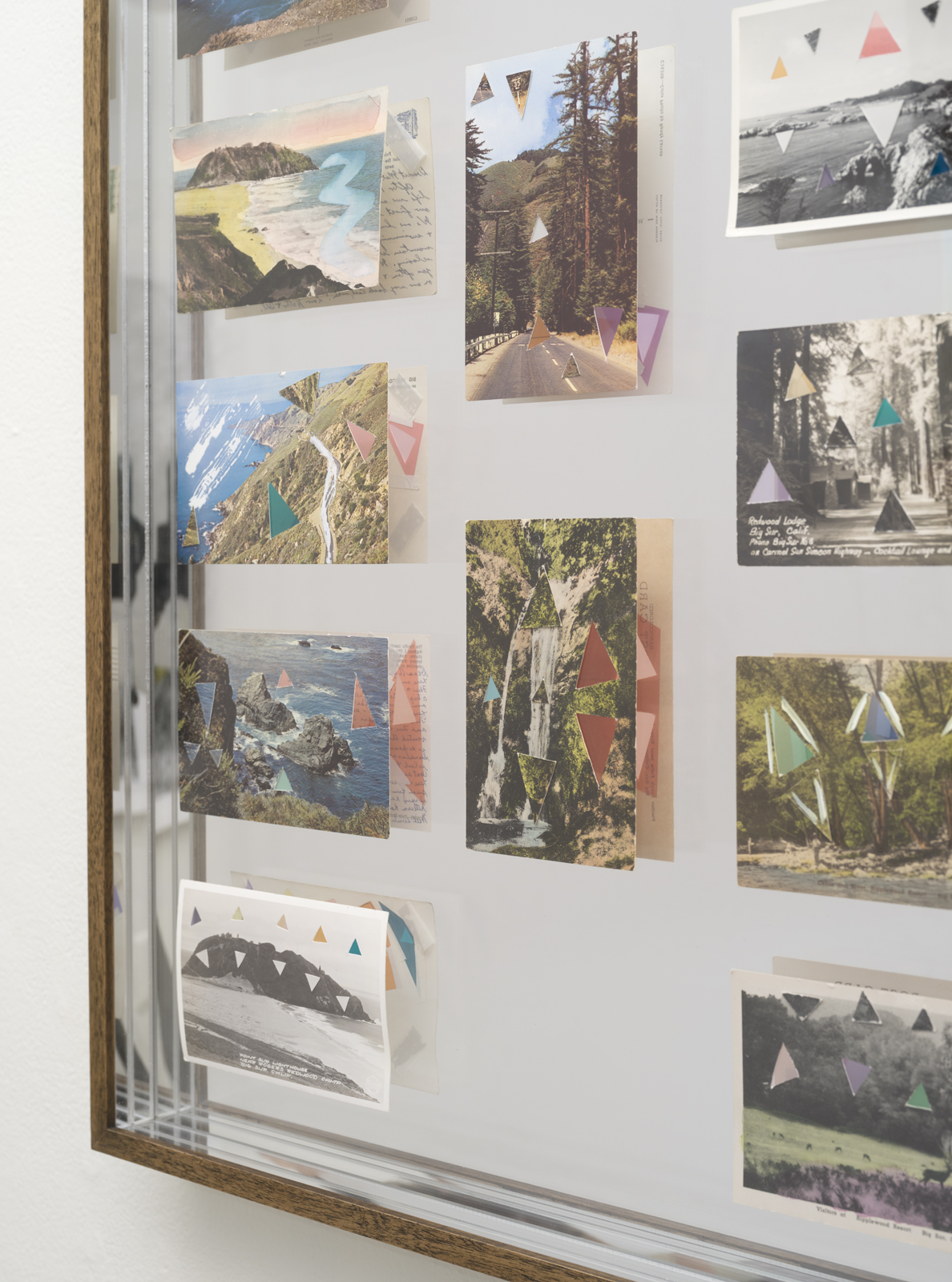






Buy the book

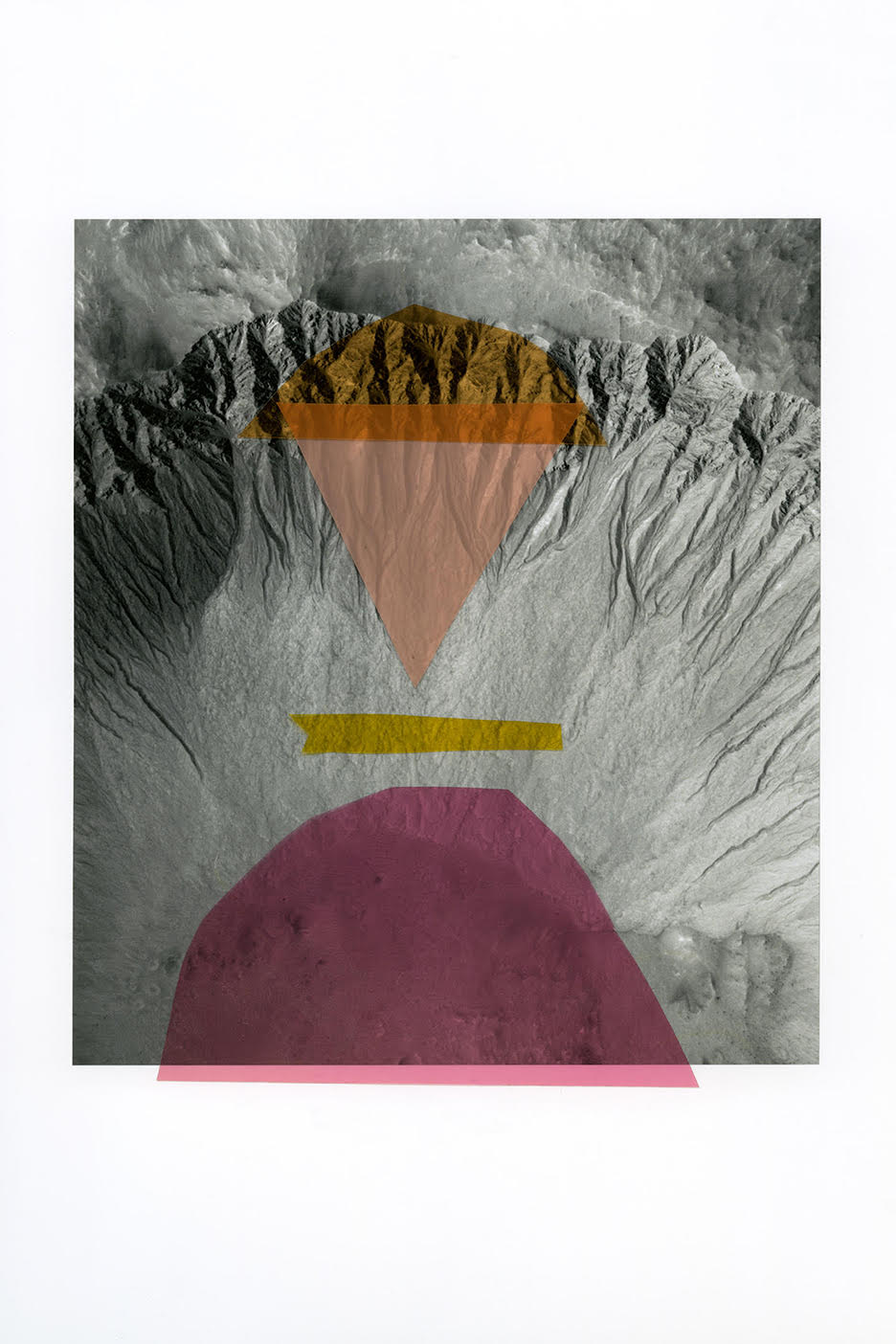
Gel Crater
2019
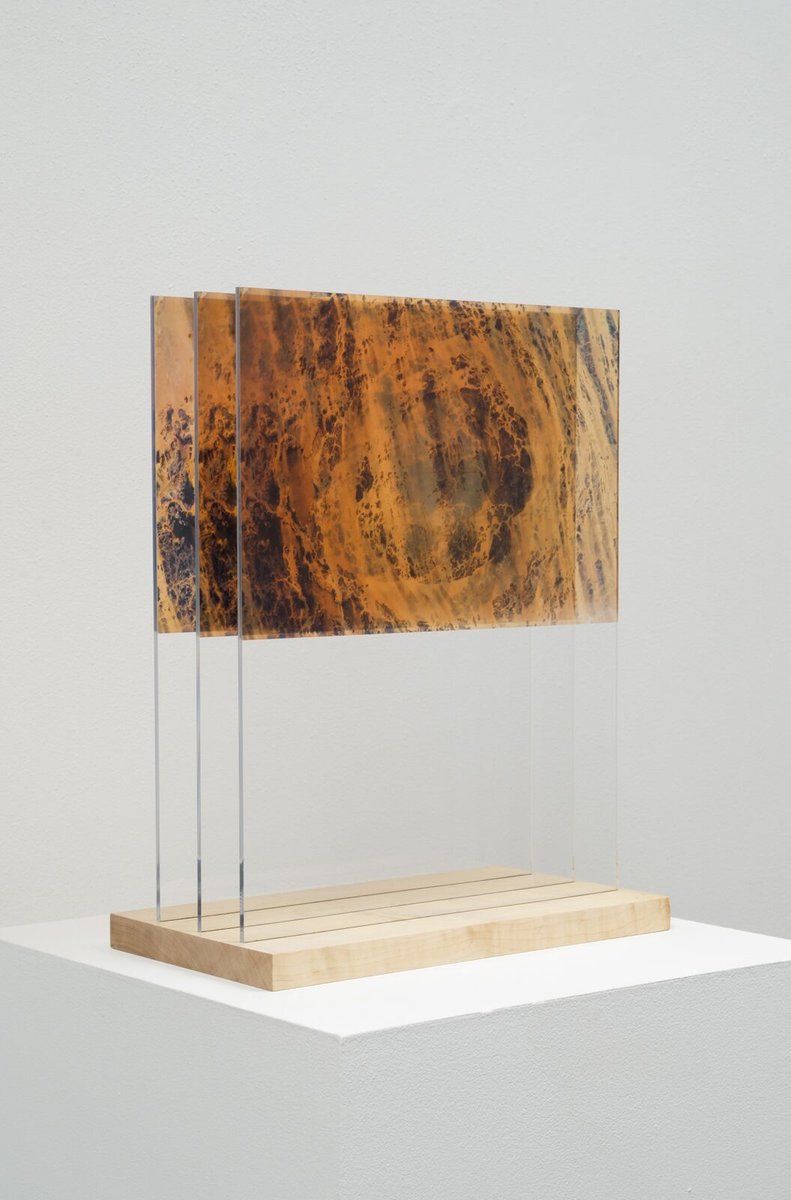
Aorounga Impact Crater X3
2017

Painted Desert X2
2015

Zabriski Point X2
2015
This series of work explores the overwhelming task of living and parenting during the pandemic. In thinking about the current climate, especially related to motherhood, I've been inspired by fourteen mountains with the highest elevations in the world, otherwise known as the Eight Thousanders. The Eight Thousanders are located in the Himalayan and Karakoram mountain ranges in Asia, and their summits are in the death zone, with sitting elevations of 8,000 meters above sea level. The mountains reach heights requiring supplemental oxygen for human exploration, and the death zone is the point where the pressure of oxygen is insufficient to sustain human life for an extended time span. Using found photographs depicting these fourteen mountains, I collage over the mountain images using colored lighting gels, producing works that amplify environmental impossibility, a metaphor of the physical and psychological weight of life under quarantine.

Mount Everest
31 x 40 inches

Shishapangma
31 x 40 inches
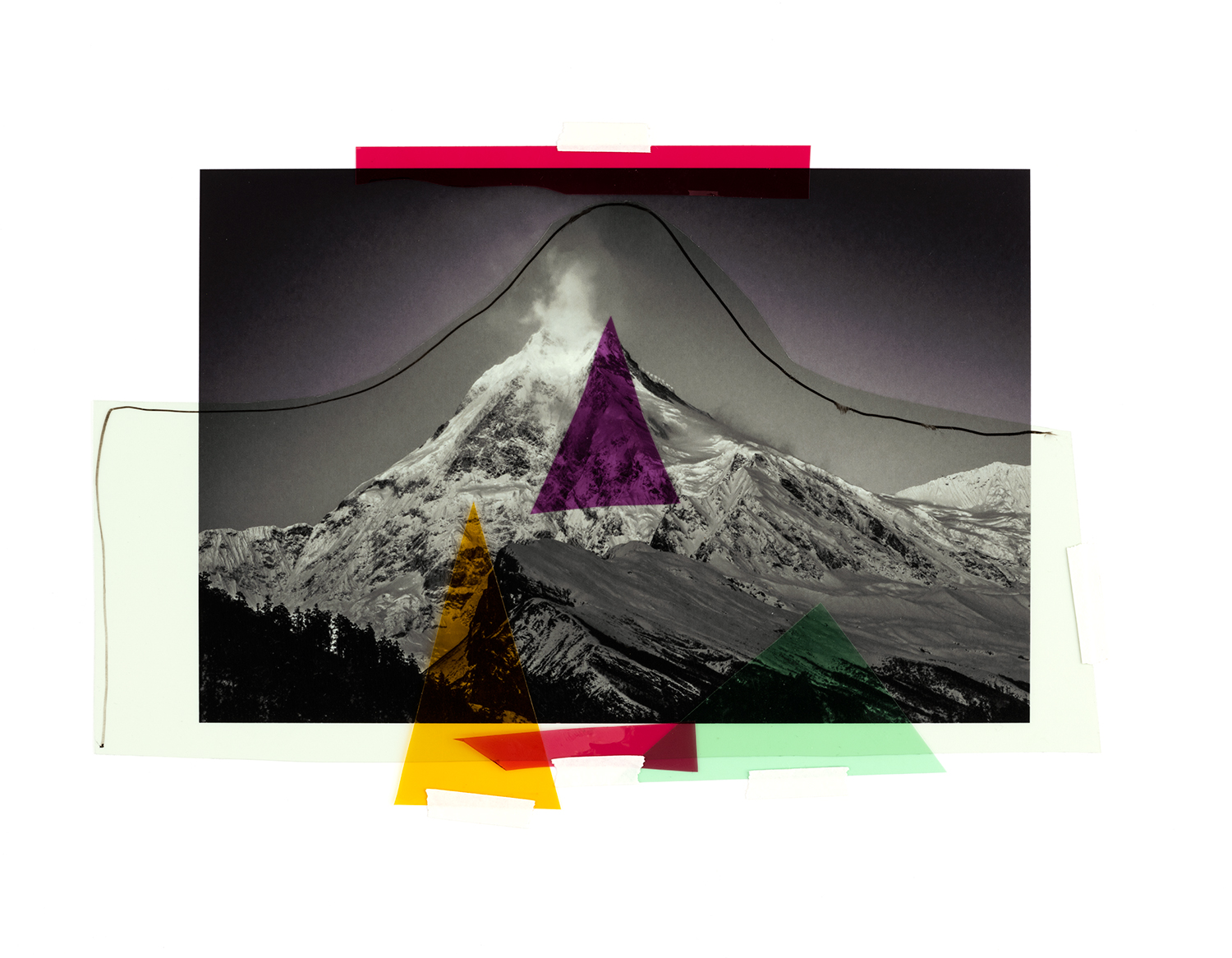
Manaslu
31 x 40 inches

Gasherbrum ii
32 x 40 inches

Cho Oyu
30 x 40 inches

Broad Peak
38 x 40 inches

Dhaulagiri
24 x 40 inches

Gasherbrum
40 x 35 inches

Annapurna
31 x 40 inches

Makalu
28 x 40 inches

Nanga Parbat
26 x 40 inches
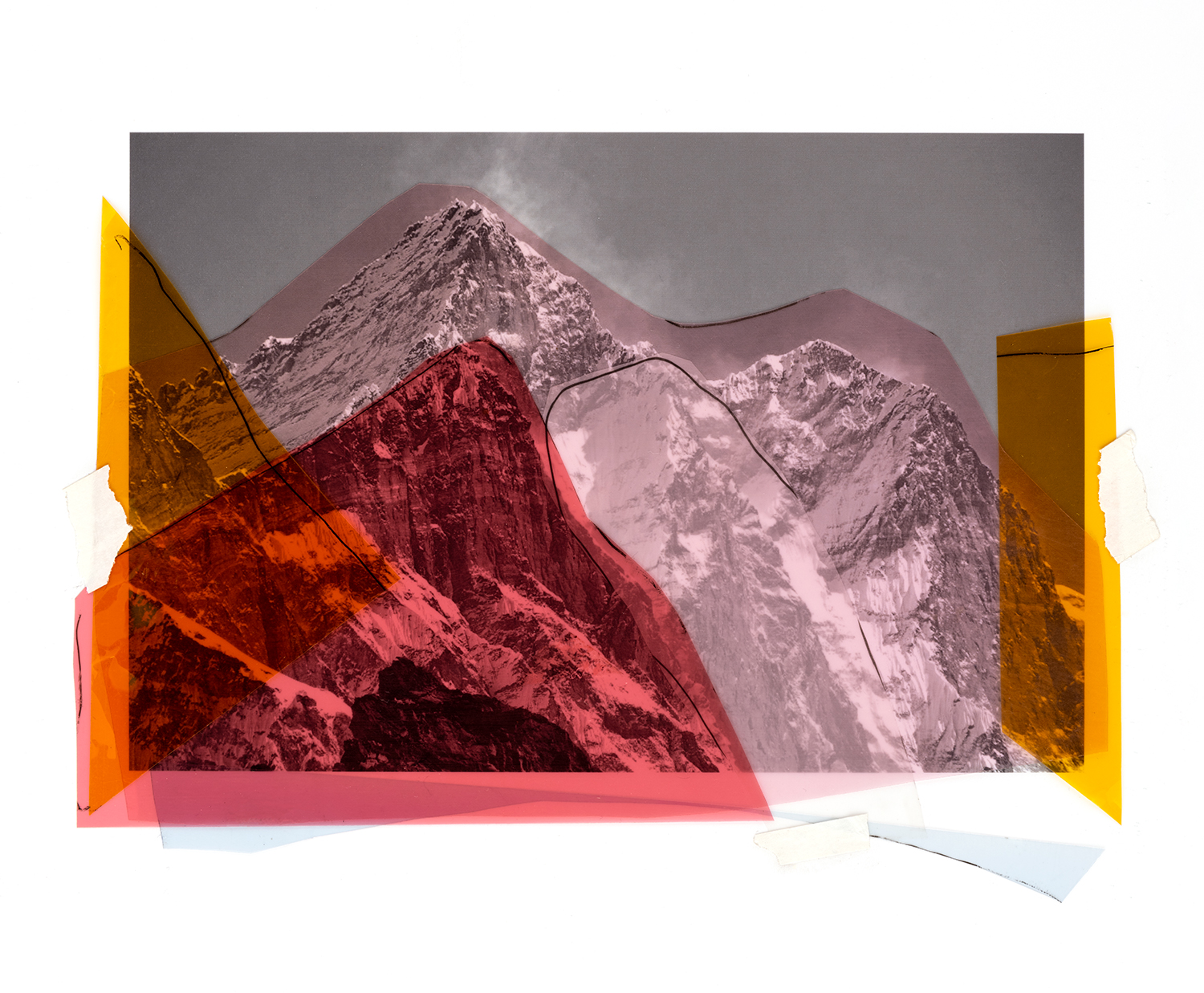
Lhotse
31 x 40 inches
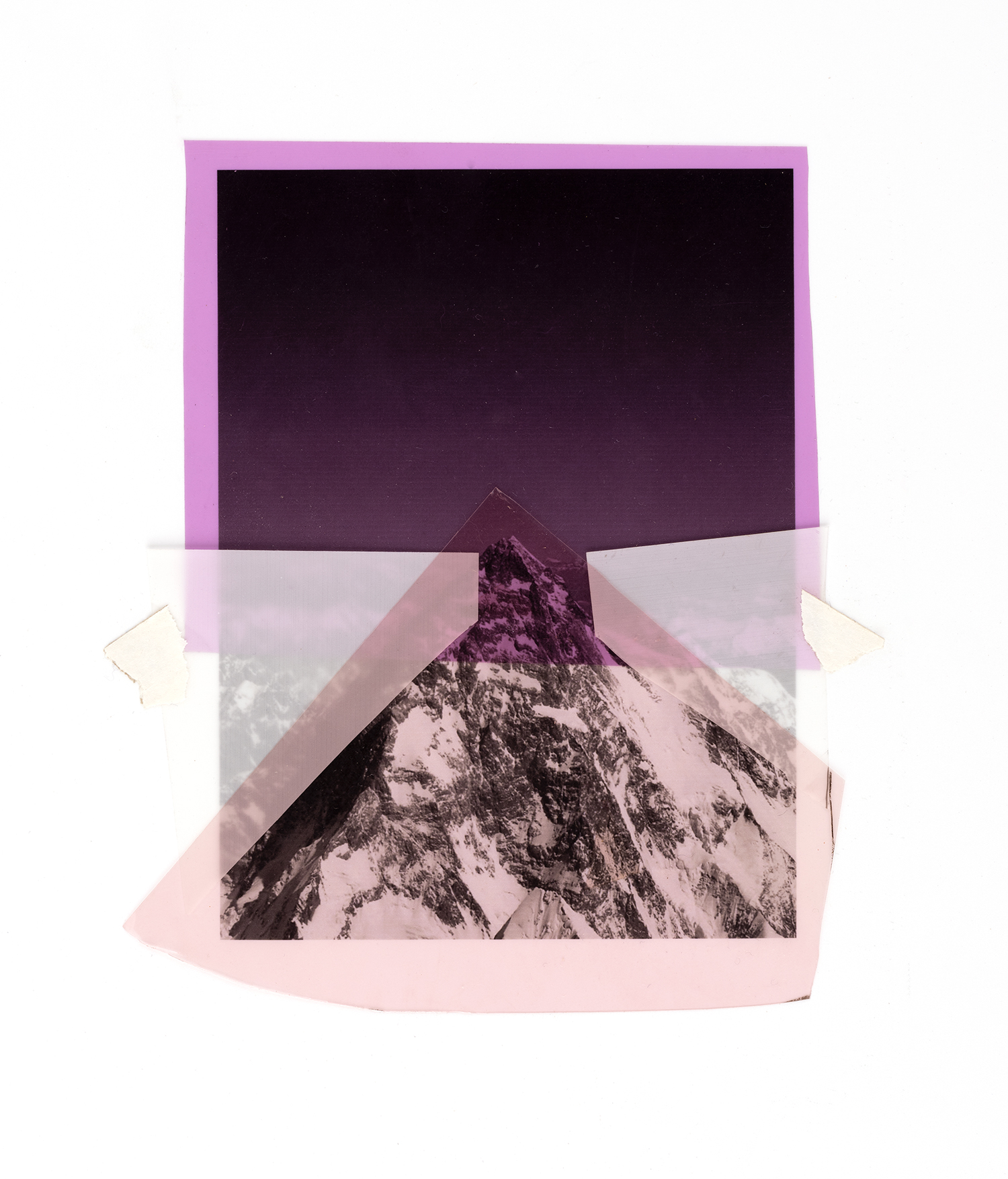
K2
40 x 31 inches

Kangchenjunga
28 x 40 inches